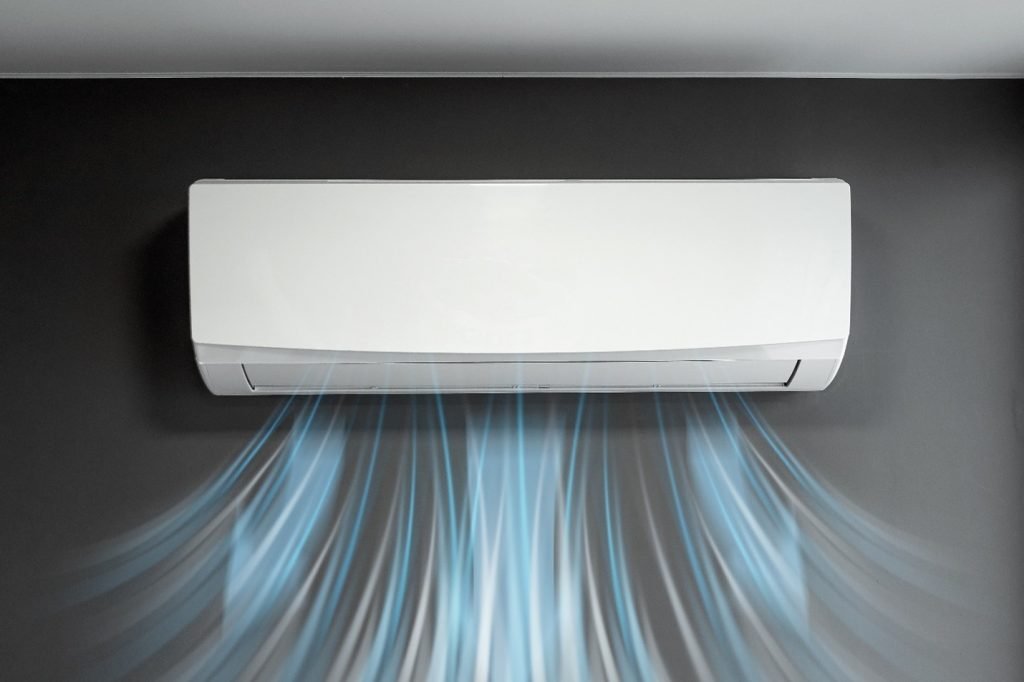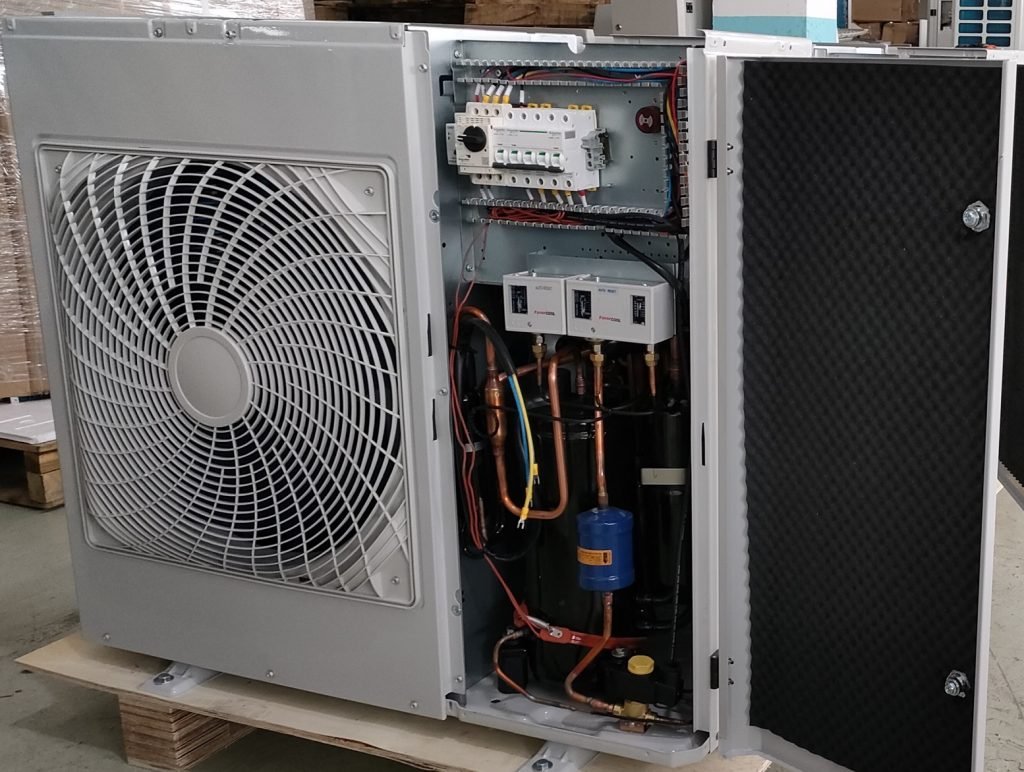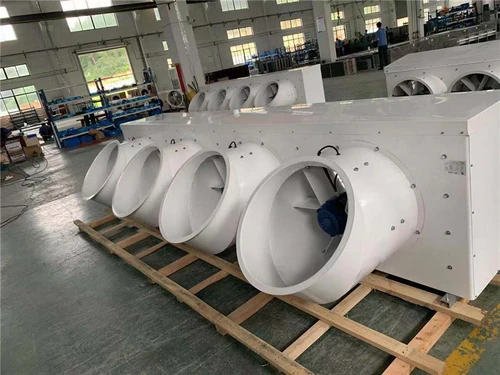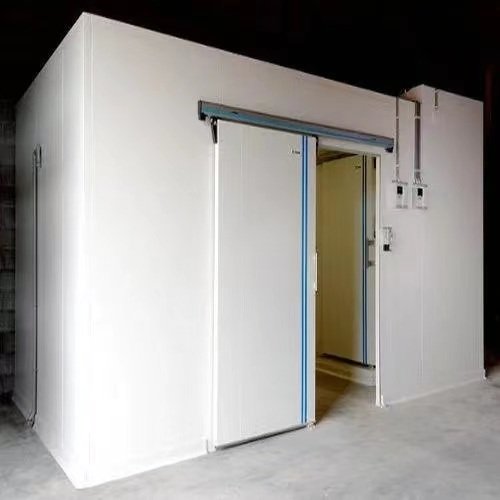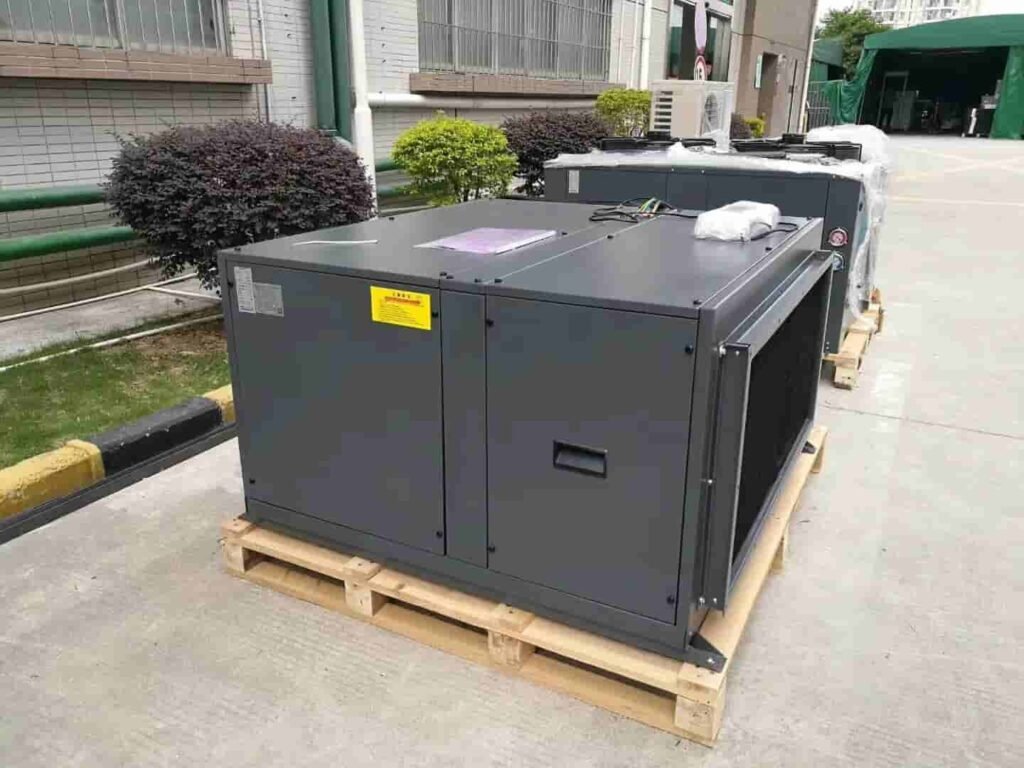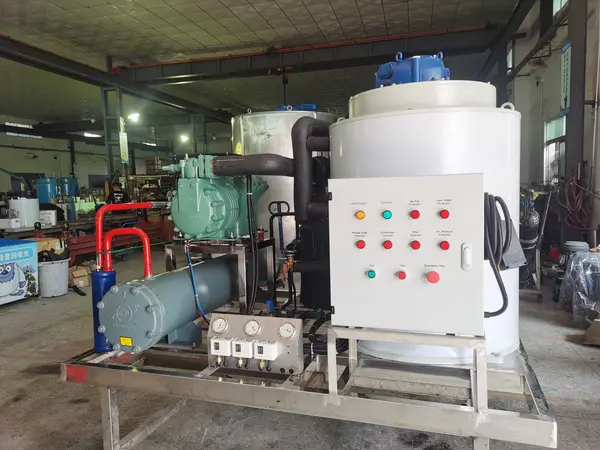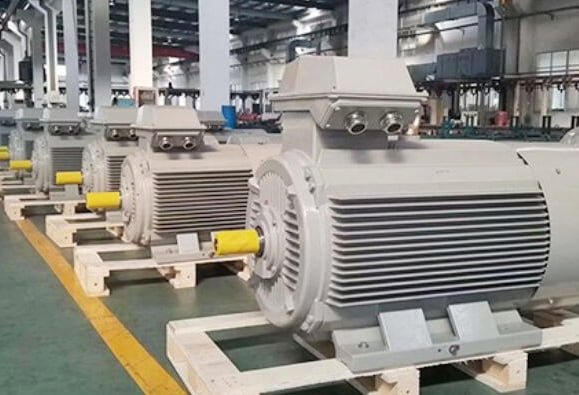ಮರದ ಪ್ಯಾಕೇಜುಗಳು, ಹಲಗೆಗಳು ಸೇರಿದಂತೆ, ಪೆಟ್ಟಿಗೆಗಳು, ಮತ್ತು ಡನೇಜ್, ಸರಕುಗಳನ್ನು ಸಾಗಿಸಲು ಜಾಗತಿಕ ವ್ಯಾಪಾರಕ್ಕೆ ಅವಿಭಾಜ್ಯವಾಗಿದೆ. ಆದಾಗ್ಯೂ, ಸಂಸ್ಕರಿಸದ ಮರವು ಗೆದ್ದಲುಗಳಂತಹ ಕೀಟಗಳನ್ನು ಆಶ್ರಯಿಸಬಹುದು, ಬಡಗಿ ಇರುವೆಗಳು, ಬಡಗಿ ಜೇನುನೊಣಗಳು, ಮತ್ತು ವಿವಿಧ ಮರದ ಕೊರೆಯುವ ಜೀರುಂಡೆಗಳು, ಹೊಸ ಪ್ರದೇಶಗಳಿಗೆ ಪರಿಚಯಿಸಿದರೆ ಗಮನಾರ್ಹವಾದ ಪರಿಸರ ಮತ್ತು ಆರ್ಥಿಕ ಹಾನಿಯನ್ನು ಉಂಟುಮಾಡಬಹುದು.
ಈ ಕೀಟಗಳನ್ನು ತೊಡೆದುಹಾಕಲು ಧೂಮೀಕರಣವು ಫೈಟೊಸಾನಿಟರಿ ಕ್ರಮವಾಗಿದೆ, ಅವುಗಳ ಹರಡುವಿಕೆಯನ್ನು ತಡೆಗಟ್ಟುವುದು ಮತ್ತು ಸ್ಥಳೀಯ ಪರಿಸರ ವ್ಯವಸ್ಥೆಗಳನ್ನು ರಕ್ಷಿಸುವುದು. ಅಂತರರಾಷ್ಟ್ರೀಯ ವ್ಯಾಪಾರದಲ್ಲಿ ಇದು ವಿಶೇಷವಾಗಿ ನಿರ್ಣಾಯಕವಾಗಿದೆ, ಅಲ್ಲಿ ಮರದ ಪ್ಯಾಕೇಜಿಂಗ್ ವಸ್ತುಗಳು ಆಕ್ರಮಣಕಾರಿ ಜಾತಿಗಳಿಗೆ ವಾಹಕಗಳಾಗಿ ಕಾರ್ಯನಿರ್ವಹಿಸುತ್ತವೆ, ಅರಣ್ಯ ಹಾನಿ ಮತ್ತು ಕೃಷಿ ನಷ್ಟಕ್ಕೆ ಕಾರಣವಾಗುತ್ತದೆ.
ಫ್ಯೂಮಿಗೇಶನ್ಗೆ ಪ್ರಾಥಮಿಕ ಚಾಲಕವೆಂದರೆ ಫೈಟೊಸಾನಿಟರಿ ಅಳತೆಗಳ ಅಂತರರಾಷ್ಟ್ರೀಯ ಮಾನದಂಡಗಳು. 15 (ISPM 15), ಅಂತರರಾಷ್ಟ್ರೀಯ ಸಸ್ಯ ಸಂರಕ್ಷಣಾ ಸಮಾವೇಶದಿಂದ ಸ್ಥಾಪಿಸಲಾಗಿದೆ (IPPC), ಆಹಾರ ಮತ್ತು ಕೃಷಿ ಸಂಸ್ಥೆಯ ಅಡಿಯಲ್ಲಿ ಒಂದು ಒಪ್ಪಂದ (FAO) ವಿಶ್ವಸಂಸ್ಥೆಯ. ISPM 15, ನಲ್ಲಿ ಪರಿಚಯಿಸಲಾಗಿದೆ 2002, ಕ್ರಿಮಿಕೀಟಗಳ ಹರಡುವಿಕೆಯನ್ನು ತಡೆಯಲು ಮರದ ಪ್ಯಾಕೇಜಿಂಗ್ ಚಿಕಿತ್ಸೆಯನ್ನು ಪ್ರಮಾಣೀಕರಿಸುತ್ತದೆ, ಈ ಹಿಂದೆ ವಿವಿಧ ಅಧಿಕಾರಿಗಳು ವಿಧಿಸಿರುವ ನಿರ್ಬಂಧಗಳ ಸಂಕೀರ್ಣ ಶ್ರೇಣಿಯನ್ನು ತಿಳಿಸುವುದು (ವಿಪರೀತ ಪ್ರಮಾಣಪತ್ರ & ಅವಶ್ಯಕತೆಗಳು | ಚೂರು). ಈ ಮಾನದಂಡವನ್ನು ಯುಎಸ್ ನಂತಹ ದೇಶಗಳು ವ್ಯಾಪಕವಾಗಿ ಅಳವಡಿಸಿಕೊಂಡಿವೆ, ಇಯು, ಆಸ್ಟ್ರೇಲಿಯಾದ, ಮತ್ತು ಜೀವವೈವಿಧ್ಯತೆಯನ್ನು ಅನುಸರಣೆ ಮತ್ತು ರಕ್ಷಿಸಲು ಚೀನಾ.
ಮರದ ಪ್ಯಾಕೇಜ್ಗಳಲ್ಲಿ ಸಾಮಾನ್ಯ ಕೀಟಗಳು
ಮರದ ಪ್ಯಾಕೇಜ್ಗಳಲ್ಲಿ ಸಾಮಾನ್ಯವಾಗಿ ಕಂಡುಬರುವ ಹಲವಾರು ಕೀಟಗಳನ್ನು ಸಂಶೋಧನೆ ಎತ್ತಿ ತೋರಿಸುತ್ತದೆ, ಪ್ರತಿಯೊಂದೂ ಗಮನಾರ್ಹ ಹಾನಿಯನ್ನುಂಟುಮಾಡುವ ಸಾಮರ್ಥ್ಯ:
- ಗೆದ್ದಲ: ಚಿಕ್ಕದು, ಇರುವೆಗಳನ್ನು ಹೋಲುವ ಬಿಳಿ ಕೀಟಗಳು, ಮರವನ್ನು ತಿನ್ನುವುದು ಮತ್ತು ರಚನಾತ್ಮಕ ಹಾನಿಯನ್ನು ಸೃಷ್ಟಿಸಲು ಹೆಸರುವಾಸಿಯಾಗಿದೆ, ಉತ್ತರ ಅಮೆರಿಕಾದಲ್ಲಿ ಪ್ರಚಲಿತವಾಗಿದೆ (ಮರವನ್ನು ತಿನ್ನುವ ಸಾಮಾನ್ಯ ಕೀಟಗಳು | ಇಕೋಗಾರ್ಡ್ ಕೀಟ ನಿರ್ವಹಣೆ).
- ಬಡಗಿ ಇರುವೆಗಳು: ಗೂಡುಗಳನ್ನು ರಚಿಸಲು ಮರವನ್ನು ಬಳಸಿ, ಕಾಲಾನಂತರದಲ್ಲಿ ದುರ್ಬಲಗೊಳಿಸುವ ರಚನೆಗಳು, ವಿಶೇಷವಾಗಿ ಪೂರ್ವ ಯುಎಸ್ನಲ್ಲಿ (ಮರದ ಹಾನಿಕಾರಕ ಕೀಟಗಳನ್ನು ಗುರುತಿಸುವುದು ಮತ್ತು ಕೊಲ್ಲುವುದು ಹೇಗೆ).
- ಶಿಲೀಂಧ್ರ ರೋಗಕಾರಕಗಳು: ವಿವಿಧ ರೀತಿಯ ಶಿಲೀಂಧ್ರಗಳು, ಸ್ಟೇನ್ ಶಿಲೀಂಧ್ರಗಳು ಸೇರಿದಂತೆ, ಕೊಳೆತ ಶಿಲೀಂಧ್ರಗಳು, ಮತ್ತು ಓಕ್ ವಿಲ್ಟ್ ನಂತಹ ರೋಗಗಳನ್ನು ಉಂಟುಮಾಡುವವರು, ಮರದಲ್ಲಿ ಬೆಳೆಯಬಹುದು ಮತ್ತು ಗಾಳಿ ಅಥವಾ ಕೀಟಗಳಿಂದ ಸಾಗಿಸುವ ಬೀಜಕಗಳ ಮೂಲಕ ಹರಡಬಹುದು.
- ನೆಮಟೋಡ್ಗಳು: ಪೈನ್ ವುಡ್ ನೆಮಟೋಡ್ ನಂತಹ ಸೂಕ್ಷ್ಮ ಸುತ್ತಿನ ಹುಳುಗಳು ಮರದ ಅಂಗಾಂಶಗಳಲ್ಲಿ ವಾಸಿಸುತ್ತವೆ ಮತ್ತು ಹೊಸ ಮರಗಳಿಗೆ ಹರಡುತ್ತವೆ, ಗಮನಾರ್ಹ ಹಾನಿ ಉಂಟುಮಾಡುತ್ತದೆ.
- ಜೀರುಂಡೆಗಳು: ಕೆಲವು ಜೀರುಂಡೆಗಳು ಮರವನ್ನು ಮುತ್ತಿಕೊಳ್ಳುತ್ತವೆ, ಮತ್ತು ಅವುಗಳ ಲಾರ್ವಾಗಳು ಹಾನಿಯನ್ನು ಉಂಟುಮಾಡಬಹುದು.
- ಹುಳಗಳು: ಕೆಲವು ವಿಧದ ಹುಳಗಳು ಮರವನ್ನು ಮುತ್ತಿಕೊಳ್ಳಬಹುದು ಮತ್ತು ಪ್ಯಾಕೇಜಿಂಗ್ ಜೊತೆಗೆ ಸಾಗಿಸಬಹುದು.
- ಕಾರ್ಪೆಂಟರ್ ಬೀಸ್: ಮರದಲ್ಲಿ ಗೂಡುಕಟ್ಟುವ ಸುರಂಗಗಳನ್ನು ಅಗೆಯಿರಿ, ಸುತ್ತಿನ ಪ್ರವೇಶ ರಂಧ್ರಗಳೊಂದಿಗೆ ಗೋಚರ ಹಾನಿಯನ್ನು ಉಂಟುಮಾಡುತ್ತದೆ, ವಿಶೇಷವಾಗಿ ಹೊರಾಂಗಣ ರಚನೆಗಳಲ್ಲಿ (5 ಮರವನ್ನು ತಿನ್ನುವ ದೋಷಗಳು ಮತ್ತು ಅವುಗಳನ್ನು ಹೇಗೆ ಗುರುತಿಸುವುದು).
- ವುಡ್-ಬೋರಿಂಗ್ ಬೀಟಲ್ಸ್: ಪೌಡರ್ಪೋಸ್ಟ್ ಜೀರುಂಡೆಗಳು ಸೇರಿದಂತೆ, ಲಾರ್ವಾ ಟನೆಲಿಂಗ್ ಮೂಲಕ ಮರವನ್ನು ಹಿಟ್ಟಿನಂತಹ ಪುಡಿಗೆ ತಗ್ಗಿಸುತ್ತದೆ, ಹಾನಿ ಸಾಮರ್ಥ್ಯದಲ್ಲಿ ಗೆದ್ದಲುಗಳ ನಂತರ ಎರಡನೆಯದು (ಪೌಡರ್ಪೋಸ್ಟ್ ಜೀರುಂಡೆಗಳು | ಕೀಟಶಾಸ್ತ್ರ).
- ಲೈವ್ ಸಸ್ಯ ವಸ್ತು: ಕೆಲವೊಮ್ಮೆ, ತೊಗಟೆ ಅಥವಾ ಮರಕ್ಕೆ ಜೋಡಿಸಲಾದ ಇತರ ಸಸ್ಯ ಸಾಮಗ್ರಿಗಳು ಆಕ್ರಮಣಕಾರಿ ಸಸ್ಯಗಳ ಬೀಜಗಳು ಅಥವಾ ಬೀಜಕಗಳನ್ನು ಸಾಗಿಸಬಹುದು.
ಈ ಕೀಟಗಳು ಮರದ ವಸ್ತುಗಳ ರಚನಾತ್ಮಕ ಸಮಗ್ರತೆಯನ್ನು ರಾಜಿ ಮಾಡಬಹುದು ಮತ್ತು, ಅಂತಾರಾಷ್ಟ್ರೀಯವಾಗಿ ಸಾಗಿಸಿದರೆ, ಆಕ್ರಮಣಕಾರಿ ಆಗಬಹುದು, ಕಾಡುಗಳು ಮತ್ತು ಕೃಷಿ ವ್ಯವಸ್ಥೆಗಳಿಗೆ ಬೆದರಿಕೆ. ಉದಾಹರಣೆಗೆ, ಮರದ ಸಾಗಣೆಯಲ್ಲಿರುವ ಕೀಟಗಳು ಕಾಡುಗಳು ಮತ್ತು ಜೌಗು ಪ್ರದೇಶಗಳಿಗೆ ಹರಡಬಹುದು, ಮರಗಳು ಮತ್ತು ಸಸ್ಯಗಳಿಗೆ ವಿನಾಶವನ್ನು ಉಂಟುಮಾಡುತ್ತದೆ, ಪ್ರತಿದಿನ ರವಾನೆಯಾಗುವ ಲಕ್ಷಾಂತರ ಮರದ ಹಲಗೆಗಳ ಸಂದರ್ಭದಲ್ಲಿ ಗಮನಿಸಿದಂತೆ (ವಿಪರೀತ ಪ್ರಮಾಣಪತ್ರ & ಅವಶ್ಯಕತೆಗಳು | ಚೂರು).
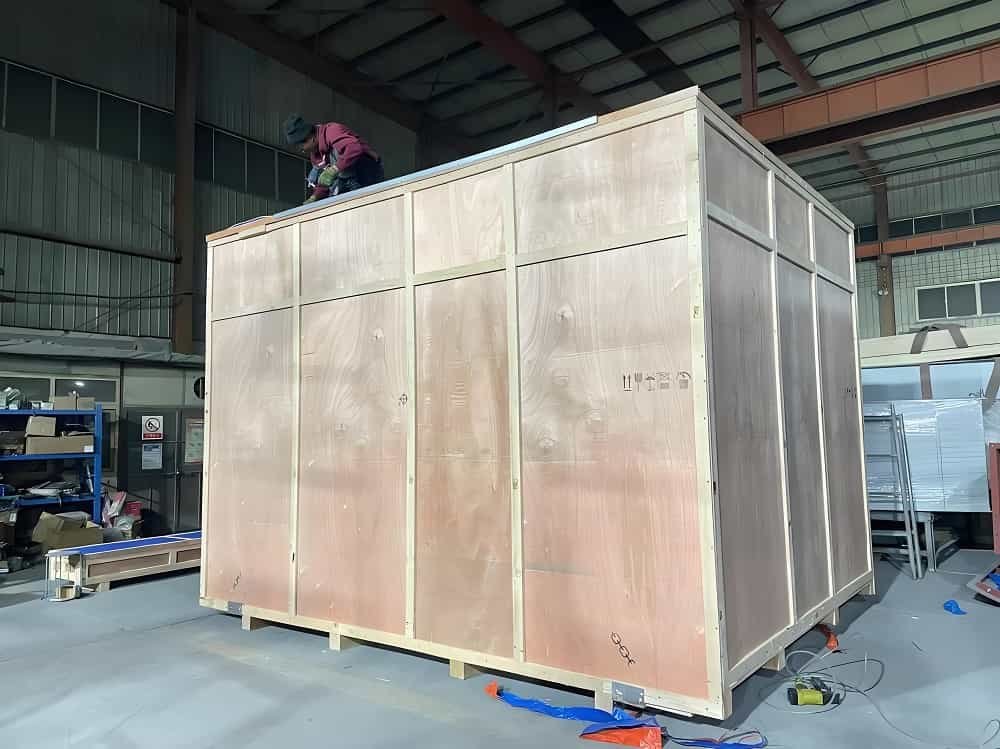
ಫ್ಯೂಮಿಗೇಷನ್ ಪ್ರಕ್ರಿಯೆ ಮತ್ತು ವಿಧಾನಗಳು
ಧೂಮೀಕರಣವು ಕೀಟಗಳನ್ನು ಕೊಲ್ಲಲು ಮರದ ಪೊಟ್ಟಣಗಳನ್ನು ಅನಿಲ ಕೀಟನಾಶಕಗಳೊಂದಿಗೆ ಸಂಸ್ಕರಿಸುವುದನ್ನು ಒಳಗೊಂಡಿರುತ್ತದೆ. ಅತ್ಯಂತ ಸಾಂಪ್ರದಾಯಿಕ ವಿಧಾನವು ಮೀಥೈಲ್ ಬ್ರೋಮೈಡ್ ಅನ್ನು ಬಳಸುತ್ತದೆ (MB), ಒಂದು ಬಣ್ಣರಹಿತ, ವ್ಯಾಪಕ ಶ್ರೇಣಿಯ ಕೀಟಗಳ ವಿರುದ್ಧ ಪರಿಣಾಮಕಾರಿ ವಾಸನೆಯಿಲ್ಲದ ಅನಿಲ. ಪ್ರಕ್ರಿಯೆಯು ಸಾಮಾನ್ಯವಾಗಿ ಒಳಗೊಂಡಿರುತ್ತದೆ:
1.ತಪಾಸಣೆ: ಮುತ್ತಿಕೊಳ್ಳುವಿಕೆಯ ಚಿಹ್ನೆಗಳಿಗಾಗಿ ಅರ್ಹ ಸಿಬ್ಬಂದಿ ಮರದ ಪ್ಯಾಕೇಜಿಂಗ್ ಅನ್ನು ಪರಿಶೀಲಿಸುತ್ತಾರೆ ಮತ್ತು ಧೂಮಪಾನಕ್ಕೆ ಅದರ ಸೂಕ್ತತೆಯನ್ನು ನಿರ್ಣಯಿಸುತ್ತಾರೆ.
2.ಲೋಡ್ ಮತ್ತು ಆವರಣ: ಮರದ ವಸ್ತುಗಳನ್ನು ಮೊಹರು ಮಾಡಿದ ಕೋಣೆಗೆ ಲೋಡ್ ಮಾಡಲಾಗುತ್ತದೆ, ಕಂಟೇನರ್, ಅಥವಾ ಗ್ಯಾಸ್ ಪ್ರೂಫ್ ಶೀಟ್ ಅಡಿಯಲ್ಲಿ. ಅಗತ್ಯವಿರುವ ಫ್ಯೂಮಿಗಂಟ್ ಸಾಂದ್ರತೆಯನ್ನು ಕಾಪಾಡಿಕೊಳ್ಳಲು ಆವರಣವು ಗಾಳಿಯಾಡದಂತಿರಬೇಕು.
3.ಲೆಕ್ಕಾಚಾರ ಮತ್ತು ಅಪ್ಲಿಕೇಶನ್: ಆವರಣದ ಪರಿಮಾಣದ ಆಧಾರದ ಮೇಲೆ ಫ್ಯೂಮಿಗಂಟ್ನ ಪ್ರಕಾರ ಮತ್ತು ಪ್ರಮಾಣವನ್ನು ಎಚ್ಚರಿಕೆಯಿಂದ ಲೆಕ್ಕಹಾಕಲಾಗುತ್ತದೆ, ಗುರಿಪಡಿಸಿದ ಕೀಟದ ಪ್ರಕಾರ, ತಾಪಮಾನ, ಮತ್ತು ಮಾನ್ಯತೆ ಸಮಯ. ಸಾಮಾನ್ಯ ಫ್ಯೂಮಿಗಂಟ್ಗಳು ಸೇರಿವೆ:
- ಮೀಥೈಲ್ ಬ್ರೋಮೈಡ್ (MB): ಐತಿಹಾಸಿಕವಾಗಿ ವ್ಯಾಪಕವಾಗಿ ಬಳಸಲಾಗುತ್ತದೆ, ಆದರೆ ಓಝೋನ್ ಸವಕಳಿ ಗುಣಲಕ್ಷಣಗಳಿಂದಾಗಿ ಅನೇಕ ದೇಶಗಳಲ್ಲಿ ಇದರ ಬಳಕೆಯನ್ನು ಹಂತಹಂತವಾಗಿ ನಿಲ್ಲಿಸಲಾಗುತ್ತಿದೆ. ಅದರ ಬಳಕೆಯ ನಿಯಮಗಳು ಗಮನಾರ್ಹವಾಗಿ ಬದಲಾಗುತ್ತವೆ.
- ಶಾಖ ಚಿಕಿತ್ಸೆ: ಕನಿಷ್ಠ 56 ° C ನ ಕನಿಷ್ಠ ಕೋರ್ ತಾಪಮಾನಕ್ಕೆ ಮರವನ್ನು ಬಿಸಿ ಮಾಡಿ 30 ನಿಮಿಷಗಳು, ISPM ಅಡಿಯಲ್ಲಿ ವ್ಯಾಪಕವಾಗಿ ಅಂಗೀಕರಿಸಲ್ಪಟ್ಟ ರಾಸಾಯನಿಕವಲ್ಲದ ವಿಧಾನ 15 (ಮರದ ಪ್ಯಾಕೇಜಿಂಗ್ ವಸ್ತು | ಪ್ರಾಣಿ ಮತ್ತು ಸಸ್ಯ ಆರೋಗ್ಯ ತಪಾಸಣೆ ಸೇವೆ).
- ಸಲ್ಫ್ಯೂರಿಲ್ ಫ್ಲೋರೈಡ್: ಓವರ್ಗೆ ಬಳಸಲಾಗಿದೆ 50 ಗೆದ್ದಲುಗಳನ್ನು ನಿಯಂತ್ರಿಸಲು ವರ್ಷಗಳು, MB ಪರ್ಯಾಯವಾಗಿ ಸಾಮರ್ಥ್ಯವನ್ನು ತೋರಿಸುವ ಅಧ್ಯಯನಗಳೊಂದಿಗೆ (ಮೀಥೈಲ್ ಬ್ರೋಮೈಡ್ ಒಳಹೊಕ್ಕು, ಸಲ್ಫ್ಯೂರಿಲ್ ಫ್ಲೋರೈಡ್, ಎಥೆನೆಡಿನಿಟ್ರೈಲ್ ಮತ್ತು ಫಾಸ್ಫೈನ್ ಮರದ ಬ್ಲಾಕ್ಗಳಾಗಿ ಮತ್ತು ಫ್ಯೂಮಿಗಂಟ್ಗಳ ಸೋರ್ಪ್ಶನ್ ದರ).
- ಫಾಸ್ಫಿನ್ (PH3): ಧಾನ್ಯದ ಧೂಮಪಾನಕ್ಕಾಗಿ ವಿಶ್ವಾದ್ಯಂತ ನೋಂದಾಯಿಸಲಾಗಿದೆ, ದೀರ್ಘವಾದ ಮಾನ್ಯತೆ ಅವಧಿಗಳ ಅಗತ್ಯವಿದ್ದರೂ (>5 ದಿನಗಳು) ಮೊಟ್ಟೆಗಳು ಮತ್ತು ಪ್ಯೂಪೆಗಳಿಗೆ (ಮೀಥೈಲ್ ಬ್ರೋಮೈಡ್ ಒಳಹೊಕ್ಕು, ಸಲ್ಫ್ಯೂರಿಲ್ ಫ್ಲೋರೈಡ್, ಎಥೆನೆಡಿನಿಟ್ರೈಲ್ ಮತ್ತು ಫಾಸ್ಫೈನ್ ಮರದ ಬ್ಲಾಕ್ಗಳಾಗಿ ಮತ್ತು ಫ್ಯೂಮಿಗಂಟ್ಗಳ ಸೋರ್ಪ್ಶನ್ ದರ).
- ಎಥನೆಡಿನಿಟ್ರಿಲ್ (C2N2): ಪೇಟೆಂಟ್ ಪಡೆದ ಫ್ಯೂಮಿಗಂಟ್ ಕ್ವಾರಂಟೈನ್ ಚಿಕಿತ್ಸೆಗಾಗಿ ಭರವಸೆಯನ್ನು ತೋರಿಸುತ್ತಿದೆ, ಸೈನೋಜೆನ್ ಎಂಬ ರಾಸಾಯನಿಕ ಹೆಸರಿನಡಿಯಲ್ಲಿ ಪೇಟೆಂಟ್ ಪಡೆದಿದೆ (ಮೀಥೈಲ್ ಬ್ರೋಮೈಡ್ ಒಳಹೊಕ್ಕು, ಸಲ್ಫ್ಯೂರಿಲ್ ಫ್ಲೋರೈಡ್, ಎಥೆನೆಡಿನಿಟ್ರೈಲ್ ಮತ್ತು ಫಾಸ್ಫೈನ್ ಮರದ ಬ್ಲಾಕ್ಗಳಾಗಿ ಮತ್ತು ಫ್ಯೂಮಿಗಂಟ್ಗಳ ಸೋರ್ಪ್ಶನ್ ದರ).
4. ಮಾನ್ಯತೆ ಅವಧಿ: ಫ್ಯೂಮಿಗಂಟ್ ಅನ್ನು ನಿರ್ದಿಷ್ಟ ಅವಧಿಗೆ ಆವರಣದೊಳಗೆ ಪರಿಚಲನೆ ಮಾಡಲು ಅನುಮತಿಸಲಾಗಿದೆ, ಹಲವಾರು ಗಂಟೆಗಳಿಂದ ದಿನಗಳವರೆಗೆ, ಫ್ಯೂಮಿಗಂಟ್ ಅನ್ನು ಅವಲಂಬಿಸಿ, ಕೀಟ, ಮತ್ತು ಪರಿಸರ ಪರಿಸ್ಥಿತಿಗಳು.
5. ಉಸ್ತುವಾರಿ: ಮಾನ್ಯತೆ ಅವಧಿಯಲ್ಲಿ, ಫ್ಯೂಮಿಗಂಟ್ನ ಸಾಂದ್ರತೆಯು ಪರಿಣಾಮಕಾರಿ ಮಟ್ಟದಲ್ಲಿ ಉಳಿಯುತ್ತದೆ ಎಂದು ಖಚಿತಪಡಿಸಿಕೊಳ್ಳಲು ಆಗಾಗ್ಗೆ ಮೇಲ್ವಿಚಾರಣೆ ಮಾಡಲಾಗುತ್ತದೆ.
6. ಗಾಳಿಯಾಡುವಿಕೆ: ಮಾನ್ಯತೆ ಅವಧಿಯ ನಂತರ, ವಿಷಕಾರಿ ಅನಿಲದ ಎಲ್ಲಾ ಕುರುಹುಗಳನ್ನು ತೆಗೆದುಹಾಕಲು ಆವರಣವನ್ನು ಸಂಪೂರ್ಣವಾಗಿ ಗಾಳಿ ಮಾಡಲಾಗುತ್ತದೆ. ಸುರಕ್ಷತೆಗಾಗಿ ಈ ಹಂತವು ನಿರ್ಣಾಯಕವಾಗಿದೆ.
7. ಪ್ರಮಾಣೀಕರಣ ಮತ್ತು ಗುರುತು: ಗಾಳಿಯಾಡುವಿಕೆಯು ಪೂರ್ಣಗೊಂಡ ನಂತರ ಮತ್ತು ಮರವನ್ನು ಸುರಕ್ಷಿತವೆಂದು ಪರಿಗಣಿಸಲಾಗುತ್ತದೆ, ಧೂಮಪಾನದ ಪ್ರಮಾಣಪತ್ರವನ್ನು ನೀಡಲಾಗುತ್ತದೆ, ಮತ್ತು ಮರದ ಪ್ಯಾಕೇಜಿಂಗ್ ಅನ್ನು ಚಿಕಿತ್ಸೆಯನ್ನು ಸೂಚಿಸುವ IPPC ಮಾರ್ಕ್ನೊಂದಿಗೆ ಗುರುತಿಸಲಾಗಿದೆ (ಉದಾ., ಮೀಥೈಲ್ ಬ್ರೋಮೈಡ್ಗೆ MB).
ಸಂಶೋಧನೆ, ಉದಾಹರಣೆಗೆ ವರ್ಜೀನಿಯಾ ಟೆಕ್, ನಿರ್ವಾತ ಮತ್ತು ಉಗಿ ತಂತ್ರಜ್ಞಾನವನ್ನೂ ಅಭಿವೃದ್ಧಿಪಡಿಸುತ್ತಿದೆ, ಚಿಕಿತ್ಸೆಯ ಸಮಯವನ್ನು ಕಡಿಮೆ ಮಾಡುವುದು ಮತ್ತು ರಾಸಾಯನಿಕ ಬಳಕೆಯನ್ನು ತೆಗೆದುಹಾಕುವುದು, ಸರಿಸುಮಾರು ಸಂಭಾವ್ಯ ಶಕ್ತಿಯ ಅಗತ್ಯತೆಗಳೊಂದಿಗೆ 0.052 ಲಾಗ್ ದ್ರವ್ಯರಾಶಿಯ Kwh/kg (ಮೀಥೈಲ್ ಬ್ರೋಮೈಡ್ ಲಾಗ್ ಫ್ಯೂಮಿಗೇಶನ್ಗೆ ಪರ್ಯಾಯ - ಮರದ ಉತ್ಪನ್ನಗಳು).
ಅಂತರರಾಷ್ಟ್ರೀಯ ಮಾನದಂಡಗಳು ಮತ್ತು ಅನುಸರಣೆ
ISPM 15 ಅನುಸರಣೆಯನ್ನು ಪ್ರಮಾಣೀಕರಿಸಲು ಮರದ ಪ್ಯಾಕೇಜಿಂಗ್ ವಸ್ತುಗಳನ್ನು ಸಂಸ್ಕರಿಸಬೇಕು ಮತ್ತು IPPC ಲೋಗೋದೊಂದಿಗೆ ಗುರುತಿಸಬೇಕು. ಮಾನದಂಡವು ಪ್ಯಾಲೆಟ್ಗಳಂತಹ ವಸ್ತುಗಳಿಗೆ ಅನ್ವಯಿಸುತ್ತದೆ, ಪೆಟ್ಟಿಗೆಗಳು, ಮತ್ತು ಡನೇಜ್, ಆದರೆ ಹೊರಗಿಡುತ್ತದೆ:
- ಮರದ ≤6 ಮಿಮೀ ದಪ್ಪ.
- ಸಂಸ್ಕರಿಸಿದ ಮರ (ಚೂರುಚೂರು, ಕಣ ಫಲಕ, ಆಧಾರಿತ ಸ್ಟ್ರಾಂಡ್ ಬೋರ್ಡ್, ಅಂಟು/ಶಾಖ/ಒತ್ತಡದ ಮೂಲಕ ತೆಂಗಿನಕಾಯಿ).
- ಉತ್ಪಾದನೆಯ ಸಮಯದಲ್ಲಿ ವೈನ್/ಸ್ಪಿರಿಟ್ ಬ್ಯಾರೆಲ್ಗಳು ಬಿಸಿಯಾಗುತ್ತವೆ.
- ಕೀಟ-ಮುಕ್ತ ಎಂದು ಸಂಸ್ಕರಿಸಿದ ವೈನ್/ಸಿಗಾರ್ಗಳಿಗೆ ಉಡುಗೊರೆ ಪೆಟ್ಟಿಗೆಗಳು.
- ಮರದ ಪುಡಿ, ಮರದ ಸಿಪ್ಪೆಗಳು, ಮರದ ಉಣ್ಣೆ.
- ಸರಕು ವಾಹನಗಳು/ಪಾತ್ರೆಗಳಿಗೆ ಮರವನ್ನು ಶಾಶ್ವತವಾಗಿ ಜೋಡಿಸಲಾಗಿದೆ.
ಉತ್ಪಾದಿಸದ ಮರದೊಂದಿಗೆ ಸಂಯೋಜಿಸಿದರೆ, ಉತ್ಪಾದಿಸದ ಭಾಗವನ್ನು ಚಿಕಿತ್ಸೆ ನೀಡಬೇಕು ಮತ್ತು ಗುರುತಿಸಬೇಕು (ಮರದ ಪ್ಯಾಕೇಜಿಂಗ್ ವಸ್ತು | ಪ್ರಾಣಿ ಮತ್ತು ಸಸ್ಯ ಆರೋಗ್ಯ ತಪಾಸಣೆ ಸೇವೆ). ಅನುಸರಣೆಯನ್ನು ರಾಷ್ಟ್ರೀಯ ಸಸ್ಯ ಸಂರಕ್ಷಣಾ ಸಂಸ್ಥೆಗಳು ಜಾರಿಗೊಳಿಸುತ್ತವೆ (NPPOS) ರಫ್ತು ಮಾಡುವ ದೇಶಗಳ, ಅಮೇರಿಕನ್ ಲುಂಬರ್ ಸ್ಟ್ಯಾಂಡರ್ಡ್ ಕಮಿಟಿಯಿಂದ ಯುಎಸ್ ನಿರ್ವಹಿಸುತ್ತಿದೆ (ಅಲ್ಸ್ಕ್) ಅಫಿಸ್ ಒಪ್ಪಂದದಡಿಯಲ್ಲಿ (ಮರದ ಪ್ಯಾಕೇಜಿಂಗ್ ವಸ್ತು | ಪ್ರಾಣಿ ಮತ್ತು ಸಸ್ಯ ಆರೋಗ್ಯ ತಪಾಸಣೆ ಸೇವೆ).
ದೇಶ-ನಿರ್ದಿಷ್ಟ ಅವಶ್ಯಕತೆಗಳು
ವಿಭಿನ್ನ ದೇಶಗಳು ನಿರ್ದಿಷ್ಟ ನಿಯಮಗಳನ್ನು ಹೊಂದಿವೆ, ಆಗಾಗ್ಗೆ ISPM ನೊಂದಿಗೆ ಹೊಂದಾಣಿಕೆ 15:
- ಯುನೈಟೆಡ್ ಸ್ಟೇಟ್ಸ್: ಕೀಟ-ಮುಕ್ತವಾಗಿರಲು ಮರದ ಪ್ಯಾಕೇಜಿಂಗ್ ಅಗತ್ಯವಿದೆ, ತೆಳುವಾದ, ಶಾಖ-ಚಿಕಿತ್ಸೆ ಅಥವಾ ಧೂಮಪಾನ, ಮತ್ತು ISPM ನೊಂದಿಗೆ ಗುರುತಿಸಲಾಗಿದೆ 15 ಲೋಗಿ, ಅನುಸರಣೆಯಿಲ್ಲದ ಸಾಗಣೆಯೊಂದಿಗೆ ಪ್ರವೇಶವನ್ನು ನಿರ್ಬಂಧಿಸಲಾಗಿದೆ (ಮರದ ಪ್ಯಾಕೇಜಿಂಗ್ ವಸ್ತು | ಪ್ರಾಣಿ ಮತ್ತು ಸಸ್ಯ ಆರೋಗ್ಯ ತಪಾಸಣೆ ಸೇವೆ).
- ಯುರೋಪಿಯನ್ ಒಕ್ಕೂಟ: ಮರದ ಪ್ಯಾಕೇಜಿಂಗ್ ಉತ್ಪನ್ನಗಳಿಗೆ 6 ಎಂಎಂ ಗಿಂತ ದಪ್ಪವಿರುವ ಚಿಕಿತ್ಸೆಯನ್ನು ಆದೇಶಿಸುತ್ತದೆ, ಅಂಟು/ಶಾಖ/ಒತ್ತಡದಿಂದ ಚಿಕಿತ್ಸೆ ನೀಡಲಾಗುವುದಿಲ್ಲ, ಪ್ರತಿ ISPM 15 ಕಾರ್ಯ (ಯುರೋಪಿಯನ್ ಒಕ್ಕೂಟದಲ್ಲಿ ಧೂಮಪಾನ ನಿಯಮಗಳು: ಒಂದು ಅವಲೋಕನ).
- ಆಸ್ಟ್ರೇಲಿಯಾ ಮತ್ತು ಚೀನಾ: ಸಂಪರ್ಕತಡೆಯನ್ನು ಅಳತೆಯಾಗಿ ಧೂಮಪಾನದ ಅಗತ್ಯವಿದೆ, ಸಾಗರ ಸರಕು ಸರಕುಗಳಿಗೆ ಪ್ರಮಾಣಪತ್ರಗಳೊಂದಿಗೆ ಕಡ್ಡಾಯ (ರಫ್ತು ಮತ್ತು ಆಮದುಗಳಲ್ಲಿ ಧೂಮಪಾನ ಎಂದರೇನು? – ಫೋಮೆಕ್ಸ್ ಗ್ರೀನ್ವುಡ್).
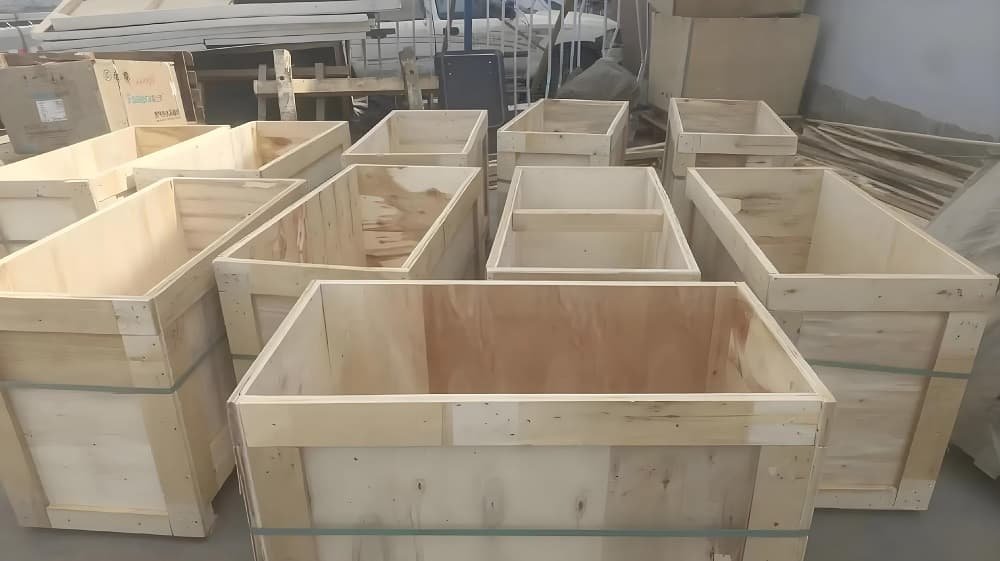
ರಫ್ತುದಾರರು ಗಮ್ಯಸ್ಥಾನ ದೇಶದ ಅವಶ್ಯಕತೆಗಳನ್ನು ಪರಿಶೀಲಿಸಬೇಕು, ಸಂಸ್ಕರಿಸಿದ ವಸ್ತುಗಳನ್ನು ಖರೀದಿಸುವುದು ಸೇರಿದಂತೆ ಆಯ್ಕೆಗಳೊಂದಿಗೆ, ತಯಾರಕರಾಗುತ್ತಿದ್ದಾರೆ, ಅಥವಾ ನೋಂದಾಯಿತ ಸೌಲಭ್ಯಗಳನ್ನು ಬಳಸುವುದು (ಮರದ ಪ್ಯಾಕೇಜಿಂಗ್ ವಸ್ತು | ಪ್ರಾಣಿ ಮತ್ತು ಸಸ್ಯ ಆರೋಗ್ಯ ತಪಾಸಣೆ ಸೇವೆ).
ಆರ್ಥಿಕ ಮತ್ತು ಪರಿಸರ ಪರಿಗಣನೆಗಳು
ಧೂಮಪಾನ ಸುಗಮ ಕಸ್ಟಮ್ಸ್ ಕ್ಲಿಯರೆನ್ಸ್ ಅನ್ನು ಖಾತ್ರಿಗೊಳಿಸುತ್ತದೆ, ವಿಳಂಬವನ್ನು ತಪ್ಪಿಸುವುದು, ದಂಡ, ಅಥವಾ ನಿರಾಕರಣೆಗಳು, ಇದು ದುಬಾರಿಯಾಗಬಹುದು.
ಆದಾಗ್ಯೂ, MB ಯ ಪರಿಸರ ಪ್ರಭಾವವು ಪರ್ಯಾಯಗಳಿಗೆ ತಳ್ಳಲು ಕಾರಣವಾಗಿದೆ, ಶಾಖ ಚಿಕಿತ್ಸೆ ಮತ್ತು ಇತರ ವಿಧಾನಗಳೊಂದಿಗೆ ರಾಸಾಯನಿಕ ಬಳಕೆಯನ್ನು ಕಡಿಮೆ ಮಾಡುತ್ತದೆ.
ಅಸಂಗತತೆಯ ವೆಚ್ಚ, ದಂಡಗಳು ಮತ್ತು ಡಿಮುರೇಜ್ ಅನ್ನು ಸೇರಿಸಿ, ಸರಿಯಾದ ಚಿಕಿತ್ಸೆಯ ಮಹತ್ವವನ್ನು ಒತ್ತಿಹೇಳುತ್ತದೆ, ಅಫಿಸ್ ಪ್ರಾಸಿಕ್ಯೂಟ್ನೊಂದಿಗೆ 88 ISPM 15 ವಂಚನೆ ಪ್ರಕರಣಗಳು 11 ವರ್ಷಗಳು, ದಂಡ $329,000, ಮತ್ತು ಮರುಪಾವತಿ $54,937 ಅನಿವಾರ್ಯ 2015 (ಮರದ ಪ್ಯಾಕೇಜಿಂಗ್ ವಸ್ತು | ಪ್ರಾಣಿ ಮತ್ತು ಸಸ್ಯ ಆರೋಗ್ಯ ತಪಾಸಣೆ ಸೇವೆ).
ಉತ್ತಮ ಅಭ್ಯಾಸಗಳು ಮತ್ತು ಪರ್ಯಾಯಗಳು
ಕಡ್ಡಾಯ ಚಿಕಿತ್ಸೆಯನ್ನು ಮೀರಿ, ಉತ್ತಮ ಅಭ್ಯಾಸಗಳನ್ನು ಅಳವಡಿಸಿಕೊಳ್ಳುವುದರಿಂದ ಮರದ ಪ್ಯಾಕೇಜಿಂಗ್ನಲ್ಲಿ ಕೀಟ ಮುತ್ತಿಕೊಳ್ಳುವಿಕೆಯ ಅಪಾಯವನ್ನು ಮತ್ತಷ್ಟು ಕಡಿಮೆ ಮಾಡಬಹುದು:
- ಡಿಬಾರ್ಕ್ ಮಾಡಿದ ಮರದ ಬಳಕೆ: ಡೀಬಾರ್ಕ್ ಮಾಡಿದ ಮರವನ್ನು ಆರಿಸುವುದು ಕೀಟ ಮುತ್ತಿಕೊಳ್ಳುವಿಕೆಯ ಸಾಧ್ಯತೆಯನ್ನು ಗಮನಾರ್ಹವಾಗಿ ಕಡಿಮೆ ಮಾಡುತ್ತದೆ.
- ಸರಿಯಾದ ಸಂಗ್ರಹಣೆ: ಮರದ ಪ್ಯಾಕೇಜಿಂಗ್ ಅನ್ನು ಒಣಗಿಸಿ ಸಂಗ್ರಹಿಸುವುದು, ಚೆನ್ನಾಗಿ ಗಾಳಿ ಇರುವ ಪ್ರದೇಶಗಳು ಶಿಲೀಂಧ್ರಗಳ ಬೆಳವಣಿಗೆಯನ್ನು ತಡೆಯಲು ಸಹಾಯ ಮಾಡುತ್ತದೆ ಮತ್ತು ಕೆಲವು ಕೀಟಗಳಿಗೆ ಆಕರ್ಷಣೆಯನ್ನು ಕಡಿಮೆ ಮಾಡುತ್ತದೆ.
- ಬಳಕೆಯ ಮೊದಲು ತಪಾಸಣೆ: ಸರಕುಗಳನ್ನು ಪ್ಯಾಕ್ ಮಾಡುವ ಮೊದಲು ಕೀಟ ಚಟುವಟಿಕೆಯ ಯಾವುದೇ ಚಿಹ್ನೆಗಳಿಗಾಗಿ ಮರದ ಪ್ಯಾಕೇಜಿಂಗ್ ಅನ್ನು ಪರೀಕ್ಷಿಸುವುದು ಮುತ್ತಿಕೊಳ್ಳುವಿಕೆಯ ಹರಡುವಿಕೆಯನ್ನು ತಡೆಯಲು ಸಹಾಯ ಮಾಡುತ್ತದೆ.
- ಸರಬರಾಜುದಾರರ ಪರಿಶೀಲನೆ: ವುಡ್ ಪ್ಯಾಕೇಜಿಂಗ್ ಪೂರೈಕೆದಾರರು ಮಾನ್ಯತೆ ಪಡೆದಿದ್ದಾರೆ ಮತ್ತು ISPM ಅನ್ನು ಅನುಸರಿಸುತ್ತಾರೆ ಎಂದು ಖಚಿತಪಡಿಸುತ್ತದೆ 15 ಮಾನದಂಡಗಳು ನಿರ್ಣಾಯಕ.
ಉತ್ತಮ ಅಭ್ಯಾಸಗಳ ಜೊತೆಗೆ, ಸಾಂಪ್ರದಾಯಿಕ ಘನ ಮರದ ಪ್ಯಾಕೇಜಿಂಗ್ಗೆ ಹಲವಾರು ಪರ್ಯಾಯಗಳು ಅಸ್ತಿತ್ವದಲ್ಲಿವೆ:
- ವಿನ್ಯಾಸಗೊಳಿಸಿದ ಮರದ ಉತ್ಪನ್ನಗಳು: ಪ್ಲೈವುಡ್ನಂತಹ ವಸ್ತುಗಳು, ಆಧಾರಿತ ಸ್ಟ್ರಾಂಡ್ ಬೋರ್ಡ್ (ಒಎಸ್ಬಿ), ಮತ್ತು ಕಣ ಫಲಕವನ್ನು ಹೆಚ್ಚಾಗಿ ISPM ನಿಂದ ವಿನಾಯಿತಿ ನೀಡಲಾಗುತ್ತದೆ 15 ನಿಯಮಗಳು ಏಕೆಂದರೆ ಉತ್ಪಾದನಾ ಪ್ರಕ್ರಿಯೆಯು ಕೀಟಗಳನ್ನು ತೆಗೆದುಹಾಕುವ ಶಾಖ ಮತ್ತು ಒತ್ತಡವನ್ನು ಒಳಗೊಂಡಿರುತ್ತದೆ.
- ಪ್ಲಾಸ್ಟಿಕ್ ಪ್ಯಾಲೆಟ್ಗಳು ಮತ್ತು ಕ್ರೇಟ್ಗಳು: ಇವು ಬಾಳಿಕೆ ಬರುವವು, ಪುನಃ ಹೇಳಬಹುದಾದ, ಮತ್ತು ಫೈಟೊಸಾನಟರಿ ಚಿಕಿತ್ಸೆಯ ಅಗತ್ಯವಿಲ್ಲ. ಆದಾಗ್ಯೂ, ಅವರು ಆರಂಭದಲ್ಲಿ ಹೆಚ್ಚು ದುಬಾರಿಯಾಗಬಹುದು.
- ಲೋಹದ ಪ್ಯಾಲೆಟ್ಗಳು ಮತ್ತು ಕ್ರೇಟ್ಗಳು: ಪ್ಲಾಸ್ಟಿಕ್ನಂತೆಯೇ, ಲೋಹದ ಆಯ್ಕೆಗಳು ಬಾಳಿಕೆ ಬರುವ ಮತ್ತು ಕೀಟ-ಮುಕ್ತವಾಗಿವೆ ಆದರೆ ದುಬಾರಿಯಾಗಬಹುದು.
- ರಟ್ಟಿನ ಪ್ಯಾಕೇಜಿಂಗ್: ಹಗುರವಾದ ಸರಕುಗಳಿಗೆ ಸೂಕ್ತವಾದರೂ, ಕಾರ್ಡ್ಬೋರ್ಡ್ ಭಾರವಾದ ಸಾಗಣೆಗಳಿಗೆ ಮರದಂತೆಯೇ ರಚನಾತ್ಮಕ ಬೆಂಬಲವನ್ನು ನೀಡದಿರಬಹುದು.
ಪ್ಯಾಕೇಜಿಂಗ್ ವಸ್ತುಗಳ ಆಯ್ಕೆಯು ಸಾಮಾನ್ಯವಾಗಿ ವೆಚ್ಚದಂತಹ ಅಂಶಗಳನ್ನು ಅವಲಂಬಿಸಿರುತ್ತದೆ, ಬಾಳಿಕೆ ಅವಶ್ಯಕತೆಗಳು, ಸರಕುಗಳ ಸ್ವರೂಪವನ್ನು ರವಾನಿಸಲಾಗುತ್ತಿದೆ, ಮತ್ತು ಪರಿಸರ ಪರಿಗಣನೆಗಳು.
ಚಿಕಿತ್ಸೆಯ ವಿಧಾನಗಳು ಮತ್ತು ಅಗತ್ಯತೆಗಳ ಸಾರಾಂಶ
| ವಿಧಾನ | ವಿವರಣೆ | ಅವಧಿ/ತಾಪಮಾನ | ಪರಿಸರದ ಪ್ರಭಾವ |
|---|---|---|---|
| ಮೀಥೈಲ್ ಬ್ರೋಮೈಡ್ | ಕೀಟಗಳನ್ನು ಕೊಲ್ಲಲು ಅನಿಲ ಧೂಮಪಾನ, ಸಾಂಪ್ರದಾಯಿಕ ವಿಧಾನ | 24 ಗಂಟೆಗಳ ಮಾನ್ಯತೆ | ಓಝೋನ್ ಸವಕಳಿ, ಹಂತಹಂತವಾಗಿ ಹೊರಹಾಕಲಾಗುತ್ತಿದೆ |
| ಶಾಖ ಚಿಕಿತ್ಸೆ | ಕೀಟಗಳನ್ನು ಕೊಲ್ಲಲು ಮರವನ್ನು ಬಿಸಿ ಮಾಡುವುದು, ರಾಸಾಯನಿಕವಲ್ಲದ | 56°C ಗೆ 30 ನಿಮಿಷಗಳು | ಕಡಿಮೆ, ಪರಿಸರ ಸ್ನೇಹಿ |
| ಸಲ್ಫ್ಯೂರಿಲ್ ಫ್ಲೋರೈಡ್ | ಪರ್ಯಾಯ ಫ್ಯೂಮಿಗಂಟ್, ಗೆದ್ದಲುಗಳಿಗೆ ಬಳಸಲಾಗುತ್ತದೆ | ಬದಲಾಗುತ್ತದೆ, ಸಾಮಾನ್ಯವಾಗಿ ಉದ್ದವಾಗಿದೆ | ಮಧ್ಯಮ, ಕಡಿಮೆ ಓಝೋನ್ ಪ್ರಭಾವ |
| ಫಾಸ್ಫಿನ್ | ದೀರ್ಘಾವಧಿಯ ಮಾನ್ಯತೆ ಅಗತ್ಯವಿರುವ ಫ್ಯೂಮಿಗಂಟ್, ಧಾನ್ಯಗಳಿಗೆ ಬಳಸಲಾಗುತ್ತದೆ | >5 ಮೊಟ್ಟೆಗಳು/ಪ್ಯೂಪೆಗಳಿಗೆ ದಿನಗಳು | ಮಧ್ಯಮ, ಆರೋಗ್ಯ ಕಾಳಜಿ |
| ಎಥನೆಡಿನಿಟ್ರಿಲ್ | ಪೇಟೆಂಟ್ ಪಡೆದ ಫ್ಯೂಮಿಗಂಟ್, ಕ್ವಾರಂಟೈನ್ ಚಿಕಿತ್ಸೆಗೆ ಸಂಭವನೀಯತೆ | ಬದಲಾಗುತ್ತದೆ, ಸಂಶೋಧನೆ ನಡೆಯುತ್ತಿದೆ | ಕಡಿಮೆ, ಉದಯೋನ್ಮುಖ ಪರ್ಯಾಯ |
ಈ ಕೋಷ್ಟಕವು ಪ್ರಮುಖ ಚಿಕಿತ್ಸಾ ವಿಧಾನಗಳನ್ನು ಸಂಕ್ಷಿಪ್ತಗೊಳಿಸುತ್ತದೆ, ಅವರ ಪ್ರಕ್ರಿಯೆಗಳು, ಮತ್ತು ಪರಿಸರ ಪರಿಗಣನೆಗಳು, ನಿರ್ಧಾರ ಕೈಗೊಳ್ಳುವಲ್ಲಿ ಮಧ್ಯಸ್ಥಗಾರರಿಗೆ ಸಹಾಯ ಮಾಡುವುದು.
ತೀರ್ಮಾನ
ಹಾನಿಕಾರಕ ಕೀಟಗಳು ಮತ್ತು ರೋಗಗಳ ಅಂತರರಾಷ್ಟ್ರೀಯ ಹರಡುವಿಕೆಯನ್ನು ತಡೆಗಟ್ಟಲು ಮರದ ಪ್ಯಾಕೇಜಿಂಗ್ನ ಹೊಗೆಯಾಡುವಿಕೆ ಅಥವಾ ಶಾಖ ಚಿಕಿತ್ಸೆಯು ಒಂದು ಪ್ರಮುಖ ಕ್ರಮವಾಗಿದೆ..
ISPM ನಂತಹ ಅಂತರರಾಷ್ಟ್ರೀಯ ಮಾನದಂಡಗಳನ್ನು ಅನುಸರಿಸುವ ಮೂಲಕ 15 ಮತ್ತು ದೇಶ-ನಿರ್ದಿಷ್ಟ ನಿಯಮಗಳನ್ನು ಅರ್ಥಮಾಡಿಕೊಳ್ಳುವುದು, ವ್ಯಾಪಾರಗಳು ಜಾಗತಿಕ ಪರಿಸರ ವ್ಯವಸ್ಥೆಗಳನ್ನು ರಕ್ಷಿಸಬಹುದು, ಗಮನಾರ್ಹ ಆರ್ಥಿಕ ನಷ್ಟವನ್ನು ತಡೆಯಿರಿ, ಮತ್ತು ಅಂತರಾಷ್ಟ್ರೀಯ ವ್ಯಾಪಾರದ ಸುಗಮ ಹರಿವನ್ನು ಖಚಿತಪಡಿಸಿಕೊಳ್ಳಿ.
ಫೈಟೊಸಾನಿಟರಿ ಅಭ್ಯಾಸಗಳಿಗೆ ಈ ಬದ್ಧತೆಯು ಆರೋಗ್ಯಕರ ಮತ್ತು ಹೆಚ್ಚು ಸುರಕ್ಷಿತ ಜಗತ್ತಿಗೆ ಕೊಡುಗೆ ನೀಡುವ ಹಂಚಿಕೆಯ ಜವಾಬ್ದಾರಿಯಾಗಿದೆ.
ಯಾವುದೇ ಕಾಮೆಂಟ್ಗಳು?
ಸ್ವಾಗತ ಸಂದೇಶವನ್ನು ಕಳುಹಿಸಿ ಅಥವಾ ಮರು ಪೋಸ್ಟ್ ಮಾಡಿ.



